Beyond the Pandemic: Lessons from a Very Difficult Year


Whether we chose to take this year’s painful lessons to heart is up to us. 2020 has not only not been an exception; it has provided exceptional opportunities for learning by forcing us to face exceptionally difficult circumstances. The first most obvious challenge has been a massive global pandemic. But what are the lessons?
First, of course, is the lesson the need to listen to the experts who warn us about possibilities of threats. The most obvious example is climate change; where scientists have been sounding the alarm for decades that the pathway we are on will lead to catastrophic changes that will threaten millions of lives.
We need to understand the circumstances as well as the forces that inspire denial. Watching millions of people refuse to engage simple preventive measures during this pandemic, such as wearing a mask and practicing social distancing, does not bode well for the more difficult, and permanent, lifestyle changes that will be required to solve the systemic problems we are facing as a species and society.
An extension of the need to understand and overcome denial during the pandemic is also necessary. We must understand and address the pervasive misinformation that validates our opinions through the ever-increasing number of sources and teach people, ourselves included, how to discern uncomfortable facts from more easy accepted realities.
As if those were not difficult enough, we need to appreciate that some people will be asked to suffer more greatly than others, not only if we fail to meet the challenges, but also in the implementation of the solutions this pandemic is forcing on us. This cannot be acceptable; neither for moral or practical reasons. Those who are asked to shoulder the burden will most likely be those who are least responsible for the problems and least able to afford, financially or personally, the sacrifices we will need to make for the greater good.
We will need to reduce the "disparity of pain" and align accountability for making changes proportional with responsibility for causing the problems. This will lead to some resentment, of course, such as the position among many Americans that the cost burden for climate change should not rest so heavily on the United States, despite the fact that the country is the second-largest contributor to the emissions associated with climate change.
Another lesson from 2020 is that many of us can be just as productive and manage our work/life balance without being required to report each day to a central work location. Already we are seeing “remote” listed as a location in some job descriptions, and some companies have already signaled, and more will determine, that it is not in their best interests (they can save money and access a broader and more diverse talent pool) and so many are unlikely to return to pre-pandemic work practices. This brings benefits, but also challenges as “the best person for the job” will not be encumbered by physical distance from a central office, but competition for those jobs will not be limited either to those in proximity.
Again, this means those without access to high-speed internet connections will find themselves again disadvantaged from those opportunities; threatening to leave some behind, just as those who lost their factory jobs when manufacturing moved offshore - or to locations with less expensive labor.
The social unrest in the wake of the deaths of so many young, black men at the hands of our police have made many - regardless of gender or racial identity - more than a little skeptical of those in power and authority. Re-establishing trust will require re-earning that moral authority through visible and systemic reforms.
In an era where promises, whether they are made by politicians, business leaders or lay persons seem to last no longer than it takes to make them, follow-through will be necessary on everything, even the smallest things to earn the public trust.
Lastly, the biggest lesson that we must learn from the last year is that we cannot let our desire to return to what has been “normal” and familiar as quickly as possible, allow us to fall back into those same practices (and ideas) that contributed to the situations we are now – finally - confronting.
Image credit: Kevin Grieve/Unsplash
Tomorrow, Dec. 8 at 1:00 ET: The 'Scope 3' Secret to Global Emissions Reduction
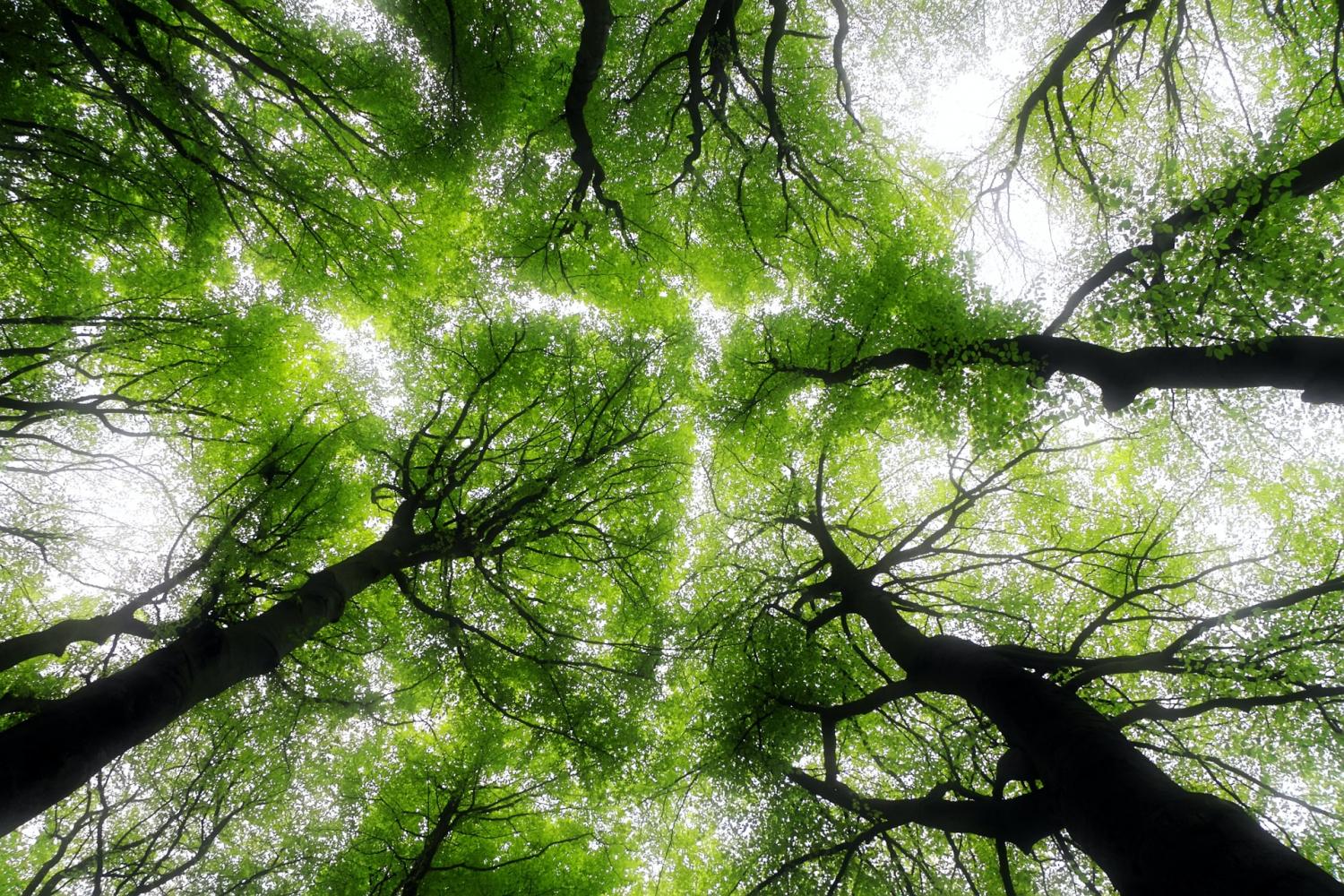

Almost overnight, the novel coronavirus pandemic has disrupted global value chains. From curbing global emissions to ending human rights violations in supply chains, investors, employees and consumers are demanding like never before that companies take responsibility for the impacts of their operations.
With this in mind, how have the tenets of stakeholder capitalism changed 10 months into the pandemic? Have expectations across the globe shifted? And are our current means of measuring — or estimating — progress proving good enough on the climate action front?
Explore answers to these questions and more with EcoVadis, the world’s largest provider of business sustainability ratings.
Register here to join tomorrow’s webcast, “A New Era of Climate Action: The 'Scope 3' Secret to Global Emissions Reduction.” The webcast will start tomorrow, Dec. 8, at 1:00 p.m. ET, and with audience Q&A should last about 40 minutes in total.
We’ll have two leading experts answering questions and concerns many of us have about business sustainability in this new reality. This will include:
- Insights on urgent, global sustainability “gigatrends” that are changing the world.
- How we can go beyond business resilience and ensure performance that mitigates environmental and social impacts.
- The business community’s new secret weapon: a transformational approach and toolset to tackle global emissions at the Scope 3 level across the value chain.
Representing EcoVadis is Julia Moshkin, a sustainability expert with over a decade of experience in environmental, social and governance (ESG) disclosure, as well as renewable energy and sustainability strategy. Moshkin leads sustainability innovation at EcoVadis, focusing on supply chain climate action and decarbonization. In this role, she develops new solutions for engagement, capacity building and disclosure to support EcoVadis’ customers to drive scalable climate action.
Joining EcoVadis is Andrew Winston, author of The Big Pivot and co-author of Green to Gold. Winston has also written more than 200 articles on strategy for the Harvard Business Review and Sloan Management Review.
TriplePundit’s editors and the production crew at 3BL Media look forward to welcoming you virtually tomorrow!
Image credit: Ed van duijn/Unsplash
Third Derivative Accelerator Launches, Expedites Clean Technology Innovation and Carbon Reduction


From a pool of 600 applicants across 60 countries, almost 50 climate innovation startups were recently selected to join a non-exclusive, 18-month clean technology accelerator. Having chosen the most investable, scalable and impactful solutions, Third Derivative (D3) aims to fund, hone and scale these companies to introduce more innovative technologies into the climate action sphere and thus feasibly achieve global carbon reductions goals.
Overcoming the barriers to creating innovative clean technology
Rocky Mountain Institute (RMI), a leading clean energy think-and-do tank, and New Energy Nexus, a nonprofit that supports clean energy entrepreneurs and accelerators across 30 countries, created D3 earlier in 2020 as a vertically integrated engine for climate innovation. Perceiving a dearth in clean technology innovation, the founders say they created D3 to help overcome resource and network barriers that can be otherwise insurmountable for such industry startups.
“I have started eight companies, and I know that this is the financial opportunity of our lifetime," Bryan Hassin, co-founder and CEO of D3, said in a press statement. "But to be successful, we have to get all the people in the game at the same time — we need the entrepreneurs with great ideas, venture capital to get them going, corporate partners to help them scale, and the market experts and mentors to ensure their success.”
“It will take investing trillions of dollars a year in technology, for many years, if we are going to solve the world’s climate challenges," Hassin continued. "We think we can unlock these trillions of dollars if we go after the big innovations that then de-risk the entire category of climate technology.”
Creating a supportive system that eliminates risks in climate tech
The startups driving Cohort 417 — named after this year’s peak atmospheric carbon dioxide concentration of 417.1 parts per million — represent the sectors creating the greatest global greenhouse gas emissions: electricity, industry and transportation being at the top of the list.
Participating in D3 means joining a well-resourced accelerator; accessing committed venture capital, including an optional $100,000 up front; gaining the financial and technical support of global corporations; and tapping into RMI’s cutting-edge market, regulatory and policy insights. The clean technology accelerator aims to support its clean technology enterprises through their lifecycle, even past 18 months, as well as on-board additional companies on an ongoing basis, with applications reopening this month, Hassin told GreenBiz.
Thus far, the supportive ecosystem Third Derivative has brought together for these startups includes nine venture capital firms — such as Imperative Ventures, Chrysalix and Tsing Capital — with a total of $2 billion in assets under management. In addition, 10 corporate partners — including AT&T, BP Ventures and Microsoft — represent $3 trillion in market capitalization. They are joined by more than 300 clean technology market experts.
Corporations and investors find profit and climate solutions through synergy
RMI and New Energy Nexus created a unique environment from the start, where global investors, corporations and startups make connections, form partnerships, and share insights. In a press release, D3 writes that the ecosystem “creates the foundation for what it takes to address global climate challenges at the scale and speed that is needed.”
While partner corporations and investors provide significant amounts of resources to the startups, they also gain holistic and lasting benefits to their businesses, D3 explains in a press release. Investors find gains by participating in due diligence, selection and coaching of startups, D3 said, adding that, as corporate partners show interest in the market solutions, investments become more secure.
In buying into D3’s well-supported startup technologies, corporations find opportunities for operational savings, revenue growth, market disruption and achieving carbon neutrality goals, the accelerator details. As opposed to the more toilsome and uncertain process of finding carbon neutrality solutions in the current market, D3 enables corporations to source, validate and scale climate solutions with greater ease.
“This vertical integrated process of selecting startups in close partnership with investors and corporates aligns all parties and provides them with the support they need to progress faster,” D3 writes in a press release.
Flattening the “valleys of death” that clean tech often faces
Startups, especially those pursuing developments in next-gen clean technology, face significant hurdles — which is why scaling is a rarity, and why companies like Tesla are few and far between, D3 says.
Some of the challenges D3 cites include: significant capital needs, needing to partner with slow-moving and risk-averse companies in selling products and scaling, and confronting the biases that markets, regulations and policies have against disruptors.
In an article, RMI identifies four “valleys of death” that the average clean technology entrepreneur faces from research through deployment: At the beginning, lack of startup funding stymies many good ideas. During product development, it’s often hard to find the perfect entry-point in the market. Products that do come to fruition may lack the money or time to get buy-in from incumbents. Finally, scaling most clean technologies requires much more capital than software does, and securing that capital involves hard-won proof of stability, profitability and scalability.
D3 and its partners aim to flatten these valleys as much as they can. The accelerator says it aims to enable selected startups to achieve commercialization and scale within five to 10 years — a process that normally takes 20 to 40 years, the program claims. These scaled technologies, as well as partner investors and corporations that are supported in the process, should ultimately help create a rising tide that lifts the ever-changing clean technology sector to greater viability.
Image credit: Chris Ried/Unsplash
The Business Case for a Third Political Party in the U.S.


Imagine your company has developed a robust plan to reduce its carbon emissions, and has invested millions of dollars in capital to comply with EPA standards and goals. Then suddenly a change in the U.S. Administration results in significantly relaxing or revoking those standards. Then, a new administration comes along and in a matter of days reinstates those standards.
Imagine that your high-technology company depends upon competent and experienced foreign labor to execute contracts the company must deliver on. Then, without warning, a visa program that has been in place for nearly 60 years that enables skilled foreign workers to work in the U.S. is suddenly suspended without regard to the impact on businesses that depend upon their skills.
These are not wild hypotheses, or viral conspiracy theories. These are scenarios playing out before our eyes. American businesses need reliable and stable legislative policy to help guide investments in infrastructure and workforce strategies. In today’s highly polarized political environment, long-term national strategies that survived successive administrations can no longer be relied upon, unless as a nation we find a way to come back to a middle ground to reach compromises. Hopes that can happen have faded with our two political party system where the parties seem to be moving only further to the left and right.
According to a Gallup Poll taken in May and June of this year, 36 percent of Americans identify as moderates, compared to 34 percent who identify as conservatives and 26 percent who identify as liberals. 54 percent of voters who identify as Democrats and Democratic-leaning independents would like to see their party become more moderate, as would 37 percent of Republicans and Republican-leaning independents. This leaves relatively small percentages of Americans who actually embrace far-left and far-right political agendas. Yet it is those on the fringes that dominate the political discourse, thanks in large part to popular biased cable news programming and social media.
Even more significant from the standpoint of business and corporate responsibility strategies is the fact that most Americans, despite their political orientation, actually agree on most major legislative issues. There is strong bipartisan agreement on climate change and the need for meaningful environmental legislation. Americans overwhelmingly agree that we should have affordable health care for everyone through a government option. We agree that immigration strengthens our country, and that social and economic injustice and inequality require our urgent attention.
What does this mean for American businesses?
First, it must be said that the business sector is already doing better than its government sector counterparts satisfying its stakeholders. In a 2018 Global CR RepTrak 100 poll of over 230,000 people, top U.S. corporations received corporate responsibility reputation scores of 65 percent and higher. In comparison, only 18 percent of Americans approve of the job the U.S. Congress is doing.
True progress on initiatives that have political, social and business implications can only be made when the government and private sectors are aligned on long-term strategies and goals. Alignment can only be achieved if the government enacts legislation that will endure through changes that occur in the Executive and Legislative branches of our government on Election Day. Based on what we have seen so far in the aftermath of this election, that alignment is not likely to occur unless significant changes in our political processes foster more moderate candidates who are motivated to seek compromise.
Hence, the argument for a third political party that represents the views of the majority of Americans. A third political party would provide a platform for moderate Republicans and moderate Democrats to come together as a powerful force in Washington. It has been demonstrated in other democracies that multiple political parties are a forcing function for coalition building and consensus, especially on strategic issues such as health care, climate action, immigration and social/income equality.
From a business perspective, a strong moderate political party platform could bring greater stability to our political discourse, and consequently a stronger socio-economic foundation upon which to base corporate strategy and corporate responsibility initiatives.
Joe Biden won the presidential election with over 80 million votes, the most in U.S. history. Yes, there are those who voted for Mr. Biden primarily as an alternative to Donald Trump. But Biden is also a moderate, vowing to bring the country together, to a middle ground. I hope he is successful, but the social and political forces that are pulling us apart have proven to be strong and unbending.
In the final analysis, structural change in our political system may be the only solution.
Image credit: Casey Horner/Unsplash
The Shifting Ground Beneath Our Feet Gets Overdue Attention


Photo: A farm manager shows nitrogen-fixing roots in a plant growing on a plot near Santa Fe, Argentina. World Soil Day is a reminder of how techniques such as carbon capture can help the quality and structure of soils across the globe. Photo courtesy of Jason Houston/WWF-US.
Healthy soils are the foundation for much of life on earth; it is the living skin of the planet. But soil is in peril—and so are we. With World Soil Day occurring tomorrow, Dec. 5, it’s worth taking time to consider the unsustainable weight we are putting on the ground beneath our feet. More than 95 percent of global food production depends on soil. Yet one-third of the earth’s soils are already degraded, with over 90 percent headed in that direction by 2050, according to the U.N. Food and Agriculture Organization (FAO). That is bad news for agriculture, biodiversity and human health.
Why World Soil Day matters to global business
It’s also bad news for business. While soil erosion has a direct impact on farmers, it also has impacts across other sectors and implications for overall environment and health including water quality, the energy sector, urban infrastructure and our landscapes.
As Melissa D. Ho, Senior Vice President, Freshwater and Food, World Wildlife Fund, told TriplePundit, “Even if a particular business is not directly related to agriculture, every business depends on the services that soil provides. If you rely on wood products, access to clean water, infrastructure and energy, or — at very least — a healthy workforce and consumer base, you need soil.”
Soil does a lot of mostly unnoticed work for the planet, she added. “We tend to overlook the biodiversity that the soil provides — billions of microorganisms that play an outsized function in our ecosystems, including nutrient cycling and nitrogen fixation. Healthy soils and landscapes also play a critical role in maintaining freshwater ecosystems — soils buffer extreme water events, whether floods or droughts, and they also buffer pollution to protect our important sources of freshwater and groundwater.”
It may not seem like it looking down, but soil is under siege
Unfortunately, World Soil Day reminds us how soil is under pressure from deforestation, overgrazing, plowing and unsustainable agricultural practices — and that comes with a price tag. Soil erosion contributing to reduced crop yields and increased water usage is estimated to cost $8 billion globally each year, according to the European Union Joint Research Centre. As a result of soil erosion, food production is reduced by 33.7 millions tons of food worldwide.
That is a cost society can ill afford, with a world of some 9.7 billion people by 2050 that need to be fed and growing food insecurity exacerbated by the COVID-19 pandemic.
Ho sketched out what we’re up against. As she explained, since the Industrial Revolution, human agriculture is the single largest source of soil exploitation and degradation. Today, about 40 percent of arable land is used for cropping and grazing for food production. Soil erosion can lead up to 50 percent loss in crop yields and has already been shown to reduce productivity of existing agricultural lands. Soil erosion on arable or intensively grazed lands are up to 1,000 times higher than natural erosion rates.
“We are losing our soil faster than it is being replenished by nature,” Ho said.
Ho ticked off the problems that occur when that happens: decreased agricultural productivity, degraded ecosystem functions, amplified water-related risk such as landslides or floods, significant losses in biodiversity, damage to urban infrastructure and, in severe cases, displacement of human populations.
Risks associated with soil health aren’t shared equally across the globe
A report from the European Commission earlier this year found that the Global South would bear the brunt of the erosion. Rich countries with high fertilizer use and moderate climates can expect erosion at a lower rate.
Without additional efforts to protect soil, this erosion would make reaching the U.N. Sustainable Development Goals (SDGs), including the target of land degradation neutrality by 2030 and the elimination of hunger, much more difficult.
The European Commission will adopt a new Soil Strategy in 2021 to address these issues in a more comprehensive way and to fulfill EU and international commitments on land degradation neutrality. The European Green Deal, targeting carbon neutrality by 2050, should also mitigate soil erosion indirectly, thanks to its positive effect on the water cycle.
New research also suggests that climate change is a major driver of the change in soil erosion and could increase average soil erosion by 30 percent to 66 percent depending on the intensity of warming predictions, due in large part because of more extreme weather and rainfall events.

Ho explained, “There are negative feedback loops between negative impacts of climate change on agriculture and ecosystems, which will in turn only exacerbate human impact on climate and nature.”
Because of its role in carbon sequestration and storage, and the potential role of soils for mitigating climate change, along with all the other roles it plays in a healthy planet and society, “soil is getting a lot of attention lately,” she said.
For those who put their hands in the dirt as their livelihood — farmers and ranchers — soil is never far from their minds, Erin Fitzgerald, CEO of the U.S. Farmers and Ranchers in Action, told 3P. USFRA recently convened a broad multi-stakeholder dialogue across the food and agriculture sector to come up with a new vision for a more sustainable agriculture system.
“World Soil Day reminds us that every farmer and every acre has the potential to unlock carbon solutions for the future,” Fitzgerald said. “The agriculture sector is often undervalued for its potential to enable the world to transition to a net-zero economy.”
Don't underestimate soil's role as a carbon sink
A 2019 report from USFRA on agriculture’s role in ecosystem services found that current soil stocks in the U.S. store as much carbon as about 123 billion cars driven for a year, nearly equivalent to the current cars to be driven in America for the next 150 years. Climate-smart practices could reduce the agriculture sector’s GHG emissions between 46 percent and 147 percent.
WWF’s Ho agreed that there is untapped potential for protecting soil in climate-smart farming practices — one that must be remembered long after today’s World Soil Day.
“Producers know that they must ensure long-term viability of their fundamental asset: the soil," Ho said. "Heathy soil is the foundation for their productivity, profitability and sustainability of their agro-ecosystem. Practices that maintain ground cover and living roots and foster healthy soil organisms and organic matter are important for protecting soil, as well as practices that keep soil structure intact and minimize mechanical disturbance and compaction."
Agricultural practices that help keep soil healthy include reduced or no-till farming; cover cropping; crop rotation; reduced chemical inputs, especially pesticides and herbicides; and management of nutrients and organic matter.
What can World Soil Day motivate us to do going forward?
It's no wonder that even before World Soil Day appeared annually on the calendar, soil health is fast becoming one of the hottest trends in the food and farming industries, according to AgFunderNews. Ag and foodtech startups like biocarbon producer Cool Planet, microbiome tester Trace Genomics and bioinformatics startup Biome Markers are among them.
Paying attention to soil is about grasping opportunities, but it’s also simple risk management, according to the World Business Council for Sustainable Development’s “Business Case for Investing in Soil Health,” which pointed out that soils play a crucial role in two of the top business risks: water crises and climate change.
“If we are to have sustainable businesses, economies and societies, they will be built on healthy soils,” the report concluded.
Image credits: WWF
Looking at ESG Through the Lens of Content at ViacomCBS


ViacomCBS is a global content company - one that's brands are renowned around the world and that’s programming has surrounded many of us since childhood. In our Times Square headquarters, MTV Moonman figurines, SpongeBob SquarePants plush toys, and CBS News reels adorn our halls and offices.
But beneath this legacy of beloved content and media history, we have been working on something that some might consider surprising: our global Environmental, Social and Governance (ESG) strategy. As a content company, we’ve been getting real about our unique responsibilities, given our global reach, and have been working to measure and manage our impacts—looking at how we show up in our audiences’ homes, on their cell phones, and in their communities through what we do every day - create content.
Part of our company’s ESG strategy focuses on what it means to measure our impact as content creators—something that’s less tangible, but extraordinarily important, especially in the midst of a global pandemic and racial reckoning in the U.S.
For ViacomCBS, this is grounded in our reach: we have the biggest broadcast footprint globally, with 31.2 billion hours of content consumed per year and more than 4.2 billion homes across the world getting our broadcast and cable programming. With our premium streaming services, we also have one of the largest inventories of digital video ads in the industry, shared with our 50 million full-episode viewers monthly.
And while we do have a physical footprint - one we proudly manage with a strong commitment to environmental responsibility - our impact is mainly reflected in how we help shape culture, social attitudes and societal outcomes, influencing how people understand the important issues we all face and delivering content that reflects the diversity of our audiences globally.
Of course, there are ESG issues that any company of our size and stature should be expected to report against: our governance structure, our diversity and inclusion policies for our workforce, and our greenhouse gas emissions, to name a few. But ViacomCBS works every day to produce the best content in the world, attracting the most innovative and creative directors, actors, animators, and more. We show up in viewers’ lives in personal ways, and that relationship demands a responsibility over the way we operate; produce and distribute content; and respect talent, employees, and partners.
In December of 2000, Queer as Folk debuted on our network Showtime as the first drama series to explore the lives of queer men in America. In February of 2017, Asia Kate Dillon appeared as Taylor Mason, the first gender non-binary character on TV in North America, on Billions. And in June 2020, one week after the killing of George Floyd, 10 of our brands, including MTV, BET, Comedy Central, and CBS Sports Network, went dark across their platforms for eight minutes and 46 seconds—showing a black screen with the words “I can’t breathe” to honor George Floyd and pay tribute to other victims of racial violence. Developing content that reflects the diversity of our audiences and their unique realities helps us build strong relationships with viewers across generational and demographic boundaries, and is central to how we make an impact. Our work continues.
To be clear, our ViacomCBS-specific environmental impacts, like the energy we use on the set of a movie or TV show, or the emissions that are generated on our Paramount Lot or CBS Studio Center in Los Angeles, are material and important for us to manage. So too are the processes by which we oversee governance topics like public policy engagement, IP and copyright, compliance, and privacy and cybersecurity. Even more so are key social issue areas like employee benefits and compensation, safety and security, and harassment and discrimination.
But at the core of our ESG strategy - our business strategy - is our commitment to showing up in ways that are meaningful to audiences around the world, and understanding how that footprint changes by brand, by country, by audience. It is our responsibility and even our passion as a company to walk the talk of our commitment to gender, sexual orientation, and ethnic and racial diversity. Enabling creators to do just that—to create freely and drive important conversations in living rooms and across social platforms around the world—is at the heart of our work.
We’ve started to outline this ESG commitment, and the particular issue areas where we both excel and need to improve, in our first company-wide ESG report, published this week. We’re at the beginning of this journey. Reporting as a tool for sustainability communication and engagement is a moment in time.
At ViacomCBS, we see no reason why we can’t be a net-positive company, environmentally and socially. We can redefine how companies measure their value and impact, and that work starts now.
Image credit: ViacomCBS/Facebook
Re-Inventing the Wheel: How CEOs Are Driving the Sustainable Tire of the Future

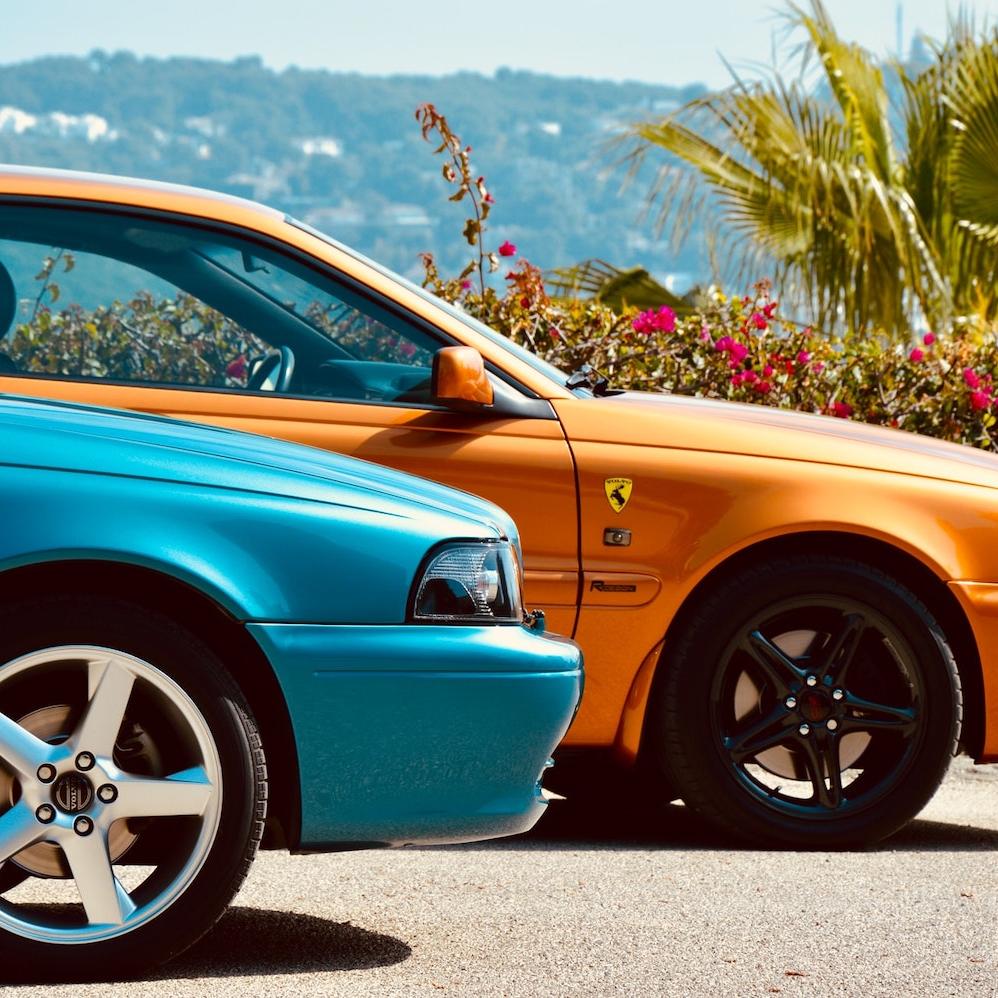
When the internal combustion engine is phased out and zero-emission electric vehicles rule the road, we’ll still have tires. Lots of tires. After all, there is no substitute for the tire as we know it today — and these everyday objects are more complex than you might think. Of course we’re all familiar with the outer tread made from synthetic and natural rubber, but tires also include other components made with a variety of materials, including steel, nylon, polyester and rayon.
The component-rich nature of tires serves to improve their longevity and performance. But their complexity makes it all the more important to understand the potential human health and environmental impacts associated with their lifecycle — particularly as the number of vehicles on the road increases, topping the 1 billion mark for the first time in 2009. According to some estimates, this figure could hit 2 billion within 15 years.
With the potential for rising demand — and corresponding impacts — in mind, back in 2005 a group of leading tire company CEOs set out to study a range of tire lifecycle issues on an organized basis.
The idea gave birth to the Tire Industry Project. Organized as a voluntary collaboration under the umbrella of the World Business Council for Sustainable Development (WBCSD), the group’s membership is currently comprised of 11 major tire companies and co-led by Bridgestone, Goodyear and Michelin.
With the assistance and work of independent consultants and advisors, TIP conducts original research and deploys analytic tools of its own invention. In addition to disseminating results to members, TIP shares information with government agencies, other research institutions and the general public.
Research driven by CEOs
TIP member companies account for more than 60 percent of the global tire industry. Through scheduled biennial meetings, participating CEOs select research topics based on potential human health and environmental impacts within the tire lifecycle. They also consider how TIP can fill existing knowledge gaps with original, scientific research.
“The main role of TIP is to generate knowledge and science related to human health and environmental impacts,” Director Anne Cécile Rémont told TriplePundit. “TIP came from CEOs who realized that if they mutualized their efforts, it would be more efficient, and they would achieve a much greater impact.”
Challenges for the tire industry
TIP research bears that out. One of the initial projects involved identifying the most commonly used chemicals in tire manufacturing and assessing their current and potential regulatory status. The work resulted in a short list of chemicals that needed additional analysis.
In another early project, TIP discovered a void of science-based knowledge around the topic of particles generated by tires on the road. When TIP started its research, there was not even a science-based consensus on what the particles look like, how to collect samples, and how to evaluate them. The dearth of information on what are now known as tire and road wear particles (TRWP) led TIP to multiple research projects that continue to have significant impact on the research community, as attention turns to microplastics in the ocean and other emerging issues.
“TIP started looking into understanding TRWP, how they are formed, what they look like, and what they are made of, in order to be able to recognize them and understand any potential impacts on human health and the environment,” Rémont explained.
So far, the group’s research indicates that TRWP are unlikely to negatively impact human health and the environment, and that few TRWP are likely to reach the ocean. But the project created a greater understanding of where the particles do settle before degradation — namely, along roadsides and, to a lesser extent, in freshwater sediment, which could lead to a holistic approach to prevent TRWP from entering the environment.
From science to action
From the initial focus on topics including the chemicals used in tire manufacturing, and tire wear, TIP has recently widened its scope to engage in broader sustainability issues tied to the tire industry’s increasing use of natural rubber.
Natural rubber is, of course, biodegradable and renewable, but it comes with its own set of challenges. “Natural rubber mainly comes from Southeast Asia, and 85 percent comes from smallholder farmers. Its production has been associated with a range of issues, including deforestation and [poor] working conditions,” Rémont told TriplePundit.
In 2017, the CEOs of TIP agreed to support the formation of the Global Platform for Sustainable Natural Rubber (GPSNR), a multi-stakeholder organization focused on socioeconomic and environmental factors across the natural rubber value chain. “We have been proactive in terms of looking for solutions, establishing an organization, creating benchmarks and performing a full lifecycle assessment,” Rémont said.
In an update earlier this year, GPSNR outlined the scope of its mission, noting that the organization “recognizes the need to work toward economic sustainability within the natural rubber industry, ensuring that the earnings of millions of smallholders and farmworkers are enough for them to enjoy a decent standard of living.”
The sustainable tires of the future may be closer than you think
Further research into tire manufacturing chemicals and TRWP will continue this year and next. The coalition will also move stakeholder engagement around end-of-life tire management forward, having recently published an updated global state of knowledge report on the management of tires at end-of-life. And it will develop a World Business Council for Sustainable Development SDG Sector Roadmap, with the aim of articulating how the tire industry can work to support the U.N. Sustainable Development Goals.
In the coming months, in partnership with TIP, we’ll take a closer look at each of these stages of the tire lifecycle, what the industry is doing to understand potential impacts, and how the sustainable tires of the future are taking shape. You can follow the series here.
This article series is sponsored by the Tire Industry Project and produced by the TriplePundit editorial team. Members of the Tire Industry Project (in alphabetical order) are Bridgestone, Continental, Cooper Tire, Goodyear, Hankook, Kumho Tire, Michelin, Pirelli, Sumitomo Rubber, Toyo Tires, and Yokohama Rubber.
Image: Manuel Mena/Unsplash
TriplePundit's Sustainable Holiday Gift Guide
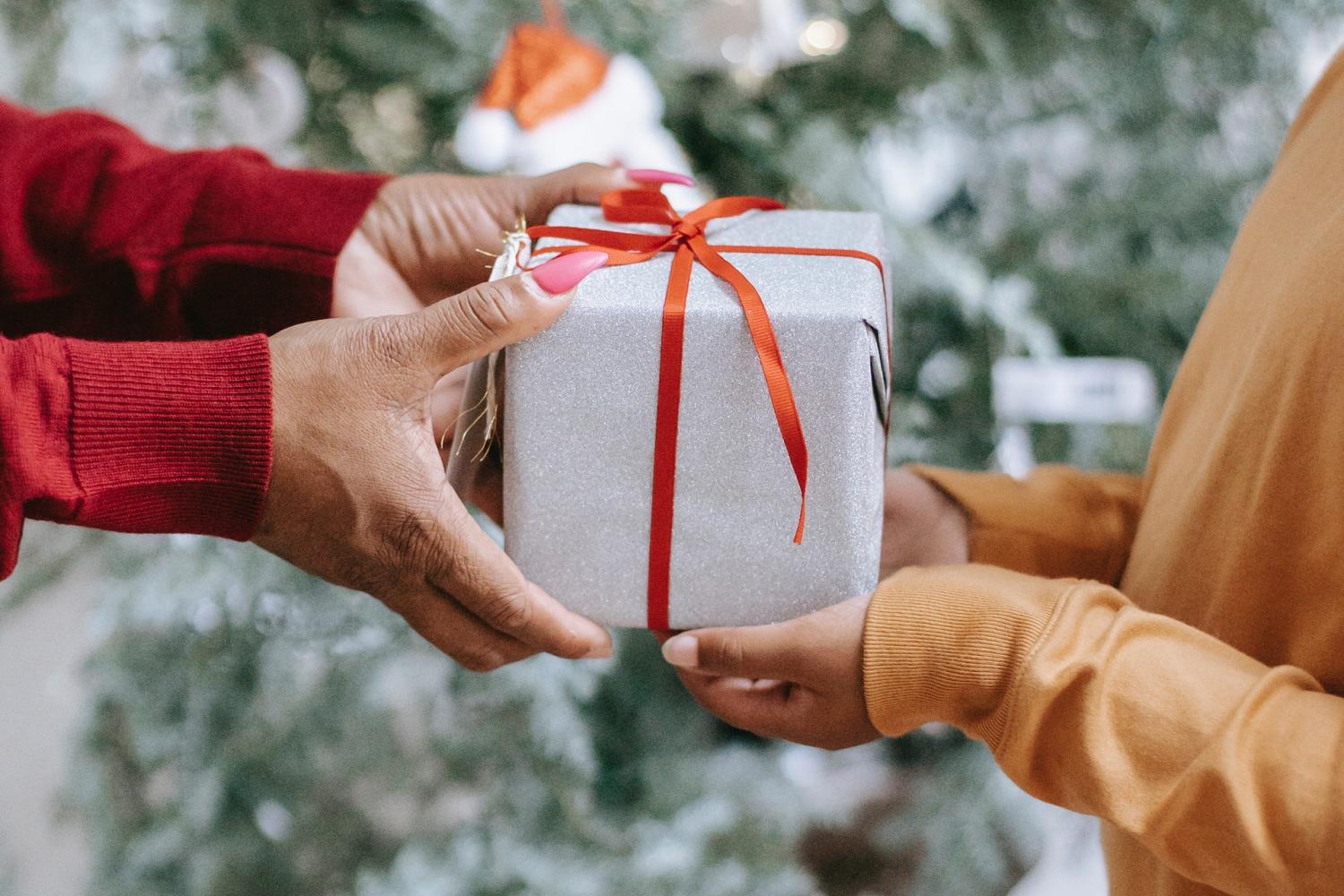
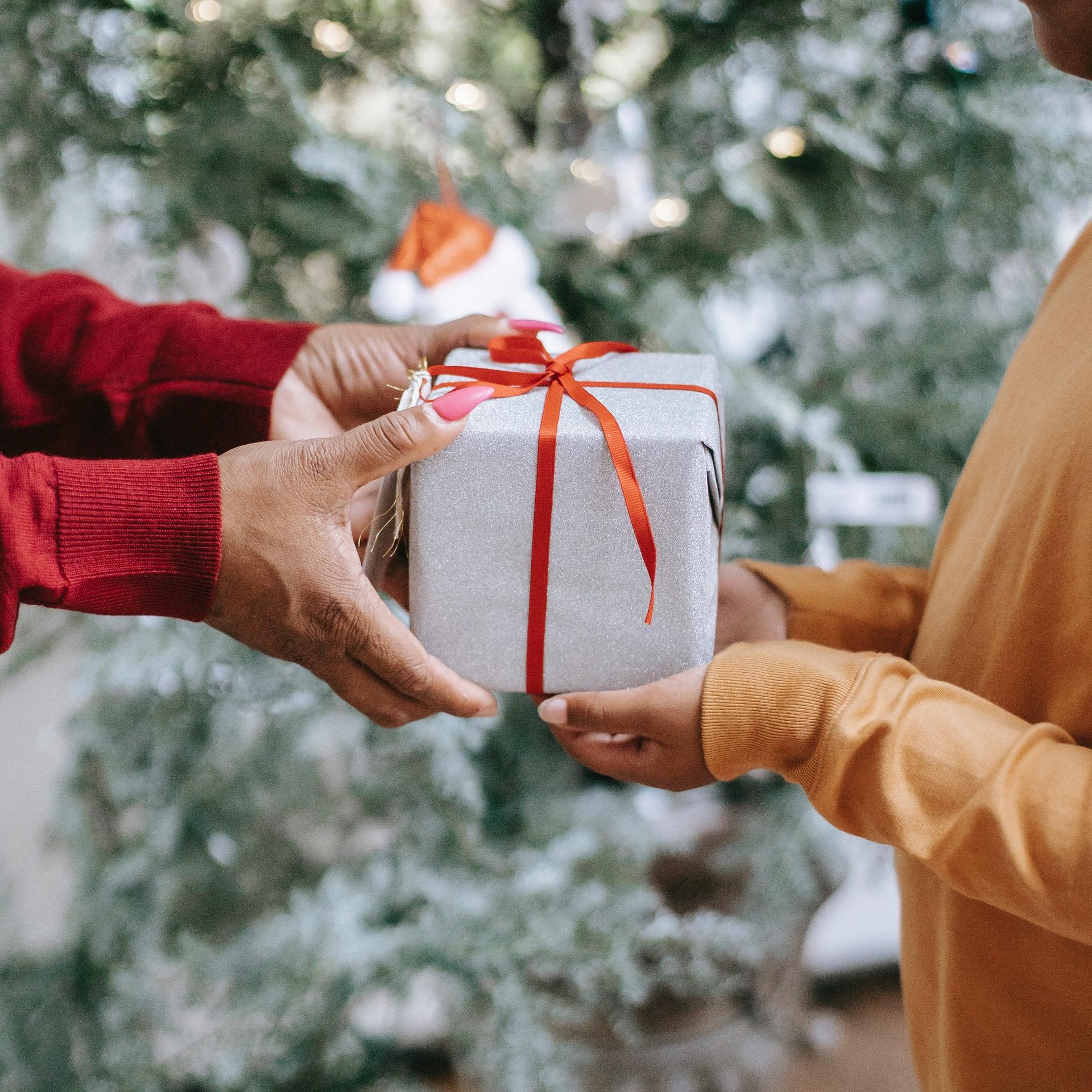
This holiday season will inevitably be different as the coronavirus pandemic keeps families apart, but if you're still searching for a way to show loved ones you care without leaving undue impact on people and the planet, we've got you covered. Read on for our sustainable holiday gift guide.

Rainbow market tote
As the coronavirus pandemic forced the world into lockdown, rainbows quickly became a symbol of solidarity in support of frontline workers and those feeling isolated indoors. Created by a group of young artists under 12, in collaboration with Uncommon Goods, this cute market tote brings quarantine window art to life while raising money to support COVID-19 relief.
From April through July, Uncommon Goods generated more than $22,000 for NYC Health + Hospitals through sales of the tote. All sale proceeds now benefit Americares' COVID-19 response efforts in the U.S.

CharityBands bracelet
Created by MantraBand, a line of minimal bracelets imprinted with inspirational phrases, the CharityBands collection supports nonprofits that create a positive impact on women's and children's issues. Choose from organizations including Alex's Lemonade Stand, the National Alliance on Mental Illness, the Alzheimer's Association and more for a gift that represents your loved one's values. Five dollars from every gift purchase benefits the chosen charity.

Sari-wrapped bread basket
Did a loved one or two become obsessed with baking bread during quarantine? Dress up their masterful creations with this festive bread basket wrapped with silk sari scraps. Through Heifer International, each gift purchase helps Nepali women artisans earn money to rebuild after destruction caused by the 2015 earthquake.

Teak serving board and bowl
Global Goods Partners works directly with women-led, community-based organizations to bring artisanal goods to market. This piece combines woodwork from Artesanos de San Pedro in Guatemala with a handmade ceramic serving bowl from Dishes & Deco in Tunisia, both of which are women-led artisan cooperatives that pay workers a living wage.

Cozy outdoor blanket
Made using Bluesign-approved materials, which conserve resources and protect the health of workers and the environment, this outdoor blanket from REI Co-Op is the perfect gift for the nature-lover on your list. With one water-resistant side and one cozy fleece side, it's perfect for picnics in the park, days at the beach or cuddles by the campfire.

Christmas fir candle
With a blend of essential oils made from sustainably harvested plants, this cozy soy and coconut wax candle gives off a scent reminiscent of a Pacific Northwest forest. Along with sourcing sustainable ingredients, Oakland-based Juniper Ridge donates 10 percent of its annual profits to conservation organizations through the Wilderness Defense Program. 2020 recipients include the California Wilderness Coalition, the Oregon Natural Desert Association and Washington Wild.

Plush sloth baby blanket
For the little ones and new parents on your list, this adorable baby blanket from the World Wildlife Fund is just the ticket. The sweet sloth plush toy folds out into a blanket, making it perfect for nap time and play time — and all gift sale proceeds benefit the WWF's global conservation work.
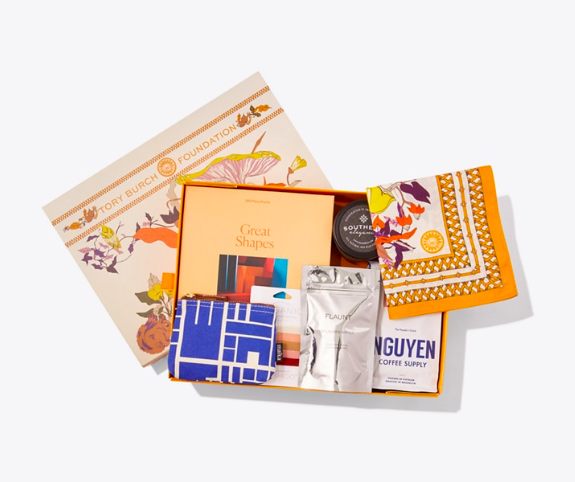
Tory Burch Foundation seed box
Fashion label Tory Burch curates this limited-edition gift box of goodies every holiday season with proceeds benefiting the company's foundation, which works to empower women as entrepreneurs. This year's box includes a Tory Burch scarf, a small-batch soy candle, imported Vietnamese coffee and more — all from small businesses headed by women.

Heirloom seed collection
Heirloom seeds bring less common flavors to home gardens while helping to preserve biodiversity. From cool-season greens and gourmet lettuces to exotic tomatoes, these custom seed packs from Terroir Seeds are sure to please any gardener on your list.

Greyston Bakery brownie boxes
As the supplier for Ben & Jerry's ice cream flavors like Half Baked, the folks at Greyston know brownies. The social enterprise also pioneered open hiring back in 1987. Having built its team without interviews, job applications or background checks, Greyston is now primarily staffed by people with criminal justice histories, as well as those experiencing homelessness, substance abuse issues or who, for whatever reason, have trouble finding steady work.
From classics like brownies and blondies to creative flavors like snickerdoodle and cinnamon roll, these socially conscious treats are sure to please any sweet tooth on your list. (And yes, they have vegan options!)

Homeboy Industries gift packages
If food is your go-to gift, consider swapping out your standbys for these gift packages with a side of social consciousness. Operating under the motto "jobs not jails," Homeboy Industries offers employment, education, and other services to former gang members after they are released from prison. Having served well over 100,000 people in its home city of Los Angeles since 1986, it now powers the Global Homeboy Network of more than 400 organizations committed to giving formerly incarcerated people a second chance.
Homeboy's selection of gift packages include coffee, snacks, preserves and baked goods, and all proceeds support its re-entry programs.

GoSun Flatware
GoSun, the maker of portable solar devices including the Chill solar-powered cooler, is taking on plastic waste. This clever set of collapsible cutlery sits in a travel case the size of a credit card and can easily replace single-use alternatives while on the go. The concept proved so popular that it blew past its Kickstarter goal in a single day, and it's bound to be a hot stocking stuffer for greenies this year.

Buy used from your favorite brands
Despite their sustainable specs, few new gifts will have less impact on people and the planet than a usable item that already exists and might otherwise go to waste. Fortunately, the re-commerce segment is booming, and major brands are getting into the trend in a big way — making it easy to source a gently-used gift for everyone on your list.
Just before Black Friday, Patagonia added an option to buy used through its used clothing and gear program, Worn Wear, next to every new product listed online (pictured above). The outdoor gear giant is the first company to give customers an easy way to purchase a used alternative when shopping for new products. Other popular brands with re-commerce stores include REI, The North Face, Eileen Fisher and Taylor Stitch. Check out our 2019 list here.

Shop online with local small businesses
The coronavirus pandemic and related shutdowns have decimated small businesses across the U.S. and around the world. As of this fall, nearly 100,000 U.S.-based small businesses had shuttered permanently.
Even if you're avoiding non-essential, in-person shopping due to the pandemic, you can still support small businesses in your area. Use sources like Google Maps and Yelp to pull up mom-and-pops near you, and browse their websites for online shopping options. To support Black-owned businesses, which have been particularly hard hit, directories like We Buy Black, Official Black Wall Street and EatOkra can help guide your way.
And don't forget restaurants! Purchasing gift certificates for your loved ones to use once it's safe to dine out again can help your favorite eateries and bars weather the storm and remain part of your community.

Donate to support COVID-19 relief
Even if you can't be together this holiday season, you can still show loved ones you care by donating to COVID-19 relief efforts in their names. Support the World Health Organization's COVID-19 Solidarity Response Fund, or use a rating database like Charity Navigator to choose a nonprofit working on direct COVID-19 relief or providing food, shelter and other necessities in your community.
Image credit: Any Lane/Pexels
Everplush Doubles Down on Sustainable Microfibers


Innovation and technology have taken center stage in 2020, as every company now seems to have its environmental, social, and corporate governance (ESG) goals publicly disclosed. However, Everplush, which makes home products such as towels and rugs made from a combination of microfiber technology and certified recycled materials, is not a stranger to integrating innovation and responsible production practices.
A 25-year manufacturing veteran in microfiber technology innovation, the company shifted its philosophy in 2015 to not just create a comfortable home, but to also include and highlight responsible manufacturing.
With companies across all industries trying to meet customers' environmental and ethical standards, one of the main ways Everplush aims to accomplish this is through its microfiber yarn, made with recycled plastic bottles. According to the company, each cleaning cloth consists of up to three 20-ounce bottles’ worth of recycled material.
“Sustainability is an important pillar of our company,” Corey Koscielniak, Vice President of Sales at Everplush, said. “As a leader in microfiber technology, we are constantly working towards better quality, mindful products, and production methods.”
The microfibers Everplush makes is comprised of polyamide and polyester from certified recycled post-consumer plastic, and the brand is making efforts to include recycled materials wherever possible, with a stated goal to have recycled material incorporated into all of its products by 2022.
“Recycled should be the new normal,” Koscielniak said. “It should have been the new normal decades ago, but mass retail wasn’t championing sustainability like they are now. We went the recycled route because so much plastic ends up in landfills, and this is an obvious and immediate way to address that from the source.”
After years of innovation, Everplush thinks that it has perfected the formula for incorporating recycled plastics into textile products. Per the company’s tests, its patented-two loop fabric structure allows for both maximum absorption and comfort.
The timing of getting this formula right could hardly be better, as the microfiber market is reportedly poised to grow after a difficult 2020. However, despite the company’s innovation and advances, jumping to a towel made from recycled plastic can be an interesting ask to make of consumers.
One remedy to this has been through consumer re-education on how to spot brands championing sustainability from all aspects of the supply chain and customer experience. Koscielniak notes that new brands can sometimes be deceptive with their claims of quality or performance and that such packaging can sometimes be misleading, evoking an eco-friendly feel while perhaps not being good for the environment.
Another issue has been the education around pricing: that cheaper does not always equal better. Recycled materials typically need more filtration to ensure that they meet the same standards as virgin microfiber, which makes the end product more expensive. However, as Koscielniak said, “Consumers in the U.S. are trained to spot a deal, without regard for the quality. When we empower consumers with product knowledge, they figure out what makes sense for them.”
“When you walk down the aisle of a big box retailer, you think you’re seeing an amazing selection of towels, but in fact, you’re seeing a lot of the same. There’s a lot of marketing around the type of cotton used, the weight of the towel, and the color selection or trims or embroideries. But most of those towels come from the same factories. There’s not much difference among them,” Koscielniak continued. “These products are designed to be cheap, but actually end up costing the consumer more over their lifetime because they have to buy it more often. If we as a body of consumers mandate that our products meet or exceed quality standards, then we’d be producing a lot less waste.”
Image credit: Everplush/Facebook
A Lesson in Crisis Management: Seven Women on a Life-or-Death Mission to Restore Trust


With more than two months to go before taking office, President-elect Joe Biden has already made fighting the COVID-19 pandemic his top priority, which means that his communications team will play a crucial role in an effort that could save tens of thousands of lives. Given that pressure, it is interesting that Biden has nominated women, who will be tasked often with crisis management, to occupy all seven senior positions on the team.
The coming year will be a test for women in crisis management, and Biden’s decision could also be a teachable moment for corporations that have failed to prioritize gender diversity.
COVID-19 response and crisis management
Though not a businessman, President-elect Biden has clearly recognized that the fundamental elements of business crisis management apply seamlessly to government. It’s a lesson that President Trump never seems to have learned, for all his many years of experience in business.
Chief among those elements are leadership, communication, clarity of purpose and swiftness of action.
Biden set the tone on Saturday, November 7, in an address to the nation after the Associated Press confirmed that he won the Electoral College and the popular vote. Though his remarks were brief, Biden went straight to the point. He made the case for taking on COVID-19 above all else, and taking his guidance from science.
"Our work begins with getting COVID under control, he said. “We cannot repair the economy, restore our vitality, or relish life's most precious moments — hugging a grandchild, birthdays, weddings, graduations, all the moments that matter most to us — until we get this virus under control.”
Biden followed up his words with action, again with an emphasis on science. Two days after addressing the nation, he announced the members of his COVID-19 Advisory Board, all experts in the relevant fields of epidemiology, public health and infectious diseases.
The breakdown of public trust
With the spotlight on COVID-19 response, the challenge facing Biden’s new communications team should be a familiar one to any CEO faced with a threat to brand reputation.
The task of repairing public trust during the COVID-19 crisis will be a formidable one. President Trump himself has spent the entire COVID-19 outbreak downplaying the threat, dismissing the science, undercutting his own public health experts and spreading conspiracy theories - and that is only the most recent manifestation of the public trust challenge.
In one form or another, the anti-science strain in American politics far predates Trump’s term in office. Legislation that places restrictions on women’s reproductive rights, for example, has long been based on made-up “facts” revolving around pregnancy prevention and abortion.
The political posturing on climate change provides another example. During the Obama administration, the ripple effect of climate change denial rose to new heights of ridiculousness. Even the simple act of changing a lightbulb became fraught with issues of personal freedom and political identity.
Public reaction to the lightbulb issue was a clear forewarning of the challenge that lay ahead for public health experts during the COVID-19 outbreak. After all, if people can be goaded into outrage over energy efficient lightbulbs, then wearing a face mask to prevent the spread of a lethal virus is perhaps a bridge too far.
Not coincidentally, President Trump has also embraced climate change denial and fostered outrage over light bulbs, while also undermining his own experts’ guidance on wearing a mask to prevent COVID-19.
The role of training and experience
Into this fire steps the seven newly named senior members of Biden’s communications team, announced on Monday.
In addition to supporting Biden’s emphasis on science and professionalism, the choice of an all-women team may reflect the President-elect’s awareness of the impact of women’s leadership on COVID-19 response globally.
Summing up the task ahead, Vice President-elect Kamala Harris said, “Our country is facing unprecedented challenges–from the coronavirus pandemic to the economic crisis, to the climate crisis, and a long-overdue reckoning over racial injustice. To overcome these challenges, we need to communicate clearly, honestly, and transparently with the American people, and this experienced, talented, and barrier-shattering team will help us do that.”
“These communications professionals express our commitment to building a White House that reflects the very best of our nation,” Harris added.
As with the new COVID-19 Advisory Board, the seven nominees have extensive relevant experience in government and public policy, including Kate Bedingfield, Jen Psaki, Karine Jean-Pierre (pictured above), Ashley Etienne, Symone Sanders, Pili Tobar and Elizabeth Alexander.
It’s never too late to diversify
With the seven nominees, Biden has established the first White House communications team staffed at the senior level exclusively by women. In another first, six of the nominees are also mothers of young children.
However interesting the history-making angle is, it should not overshadow the main point. Years of professional training and relevant experience enabled these seven women to fill some of the most high-profile roles in the White House with an abundance of qualifications during a critical moment in the nation’s history, with innumerable lives at stake and long-term health consequences for untold numbers more.
Those qualifications don't just pop up out of thin air. They come from nurturing talent and recognizing the benefits of diversity early on.
Cracks in the seams of the tech industry and the fossil fuel industries already suggest that a failure to diversify from the ground up can have serious long-term consequences.
CEO’s who have not absorbed the diversity lesson have a lot of catching up to do, but it is never too late to get started, and the Biden administration may provide just the guidebook needed in a time when a strong grasp of crisis management is more important now than ever before.
Image credit: Wiki Commons